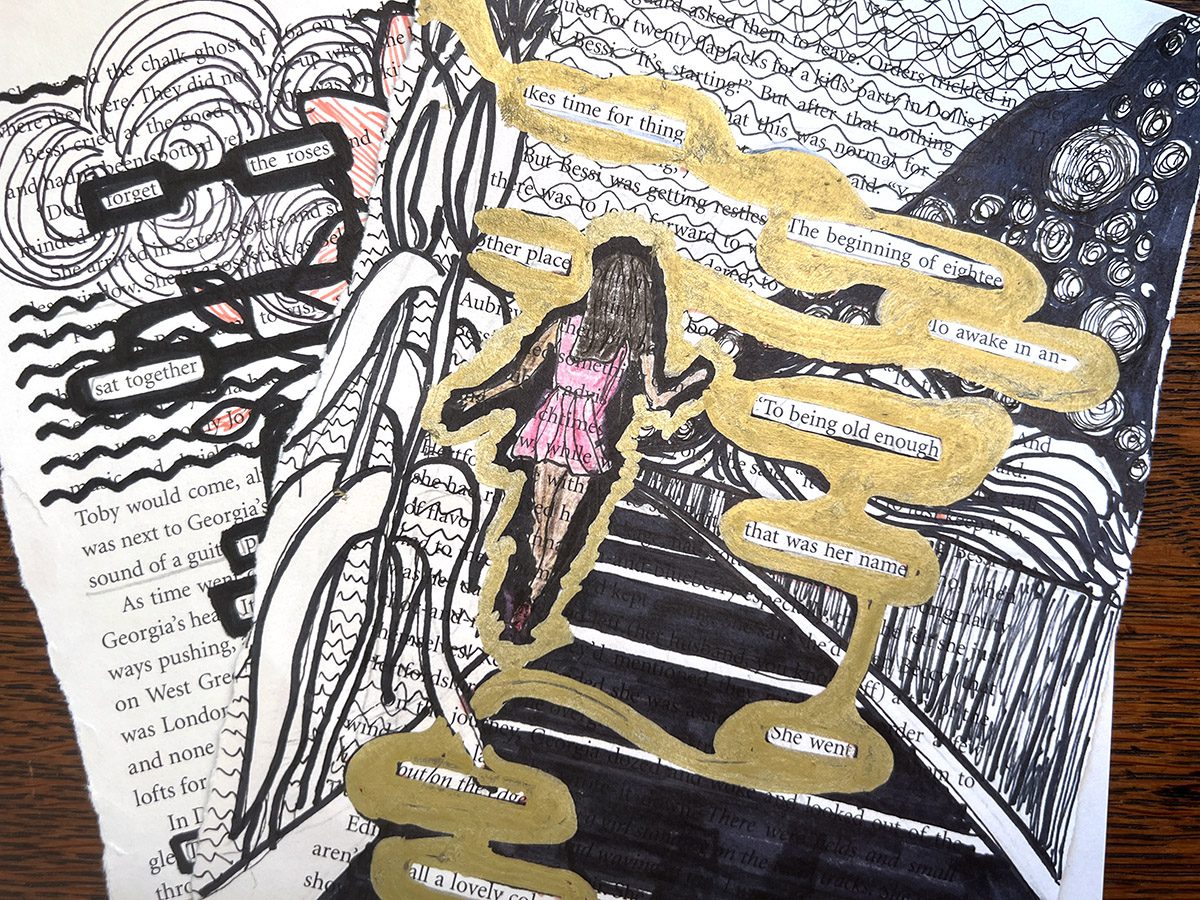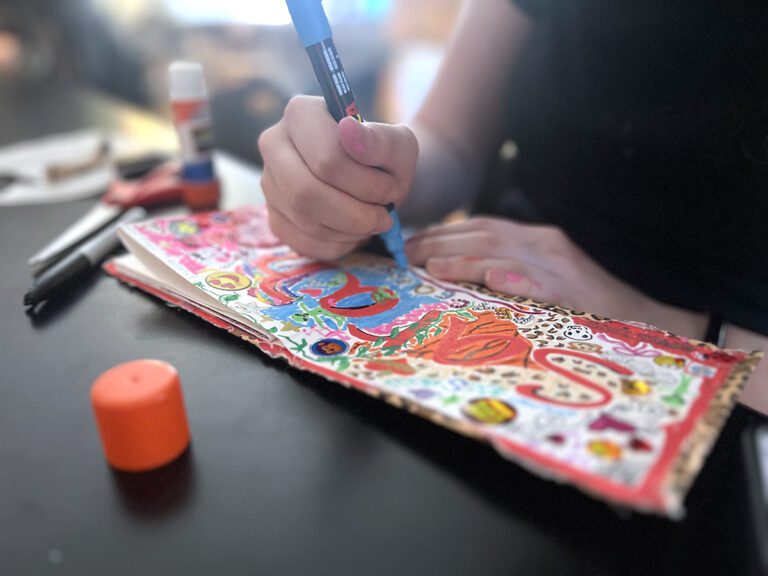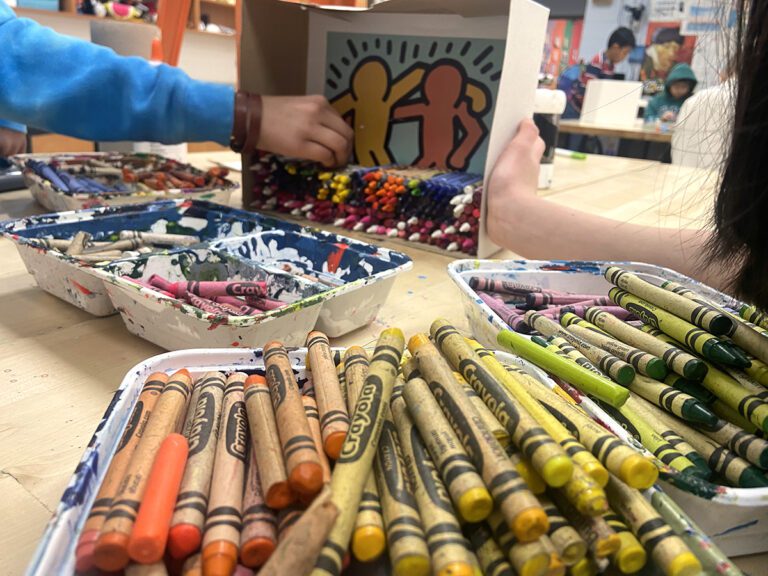Note: Be sure to review all resources and preview all artists before determining if they are appropriate to share with your students.
Poetry is an art form, so how do you bring it into art class? While it’s true that poetry and art exist in seemingly different realms, they both have a lot to offer as forms of creative expression. Blackout poetry makes bridging the divide easier than you think and allows students to explore the creative interplay between language and visual elements. Blackout poetry, or erasure poetry, involves selectively obscuring words from a printed page to make a new composition.
Blackout poems are a great entry point to combine literacy and art. Discover how to implement them with the inspiration and steps below.
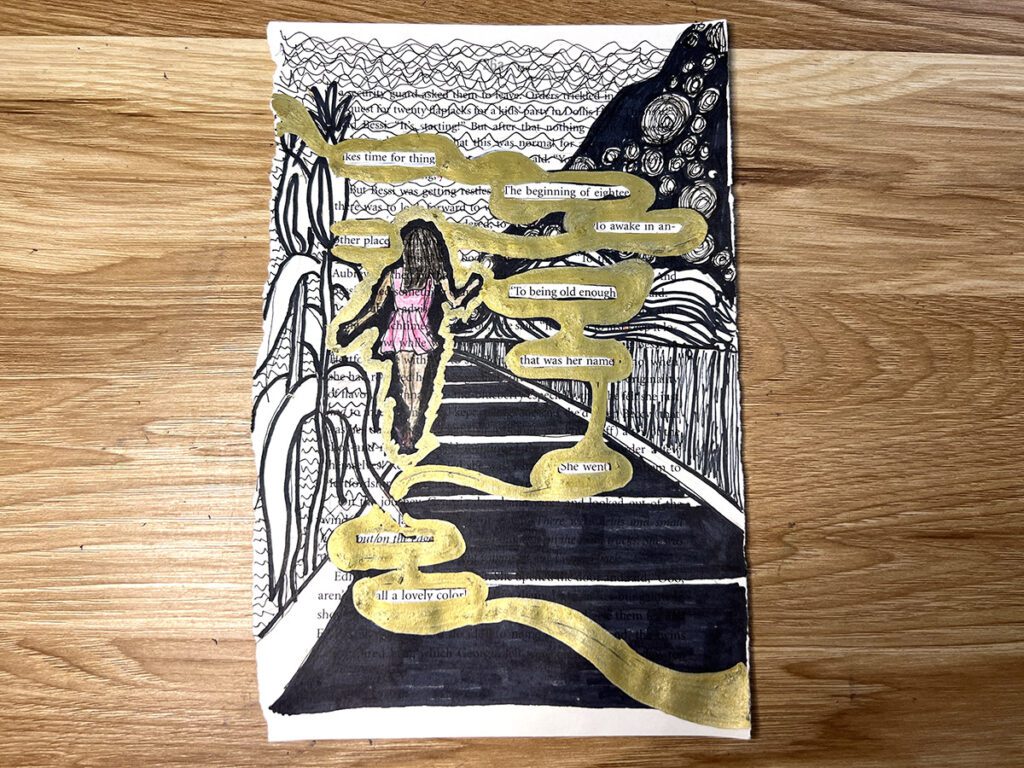
Blackout poetry has roots stretching back to the 1700s, however, two key artists played important roles in its recent resurgence. Let’s take a look at each with an example of their work.
Here are two artists who love blackout poetry:
1. Tom Phillips
Tom Phillips‘ groundbreaking work in the 1960s, A Humument, pioneered the concept of altered books. By selectively obscuring words and phrases in a forgotten Victorian novel and adding artistic embellishments, Phillips transformed the book into a work of art. It inspired a new generation of poets and artists to explore erasure poetry.
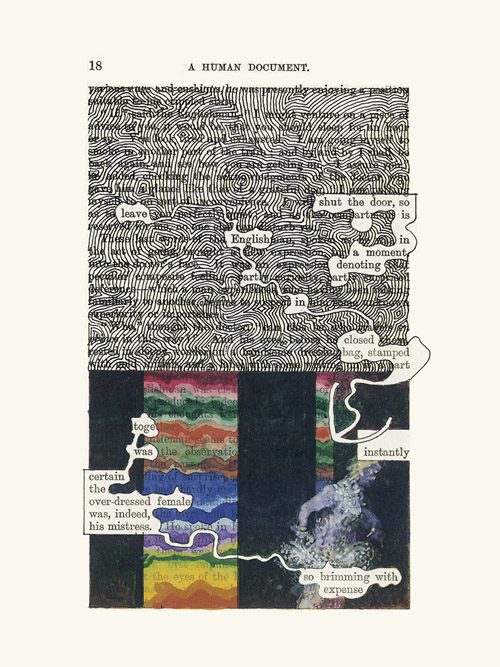
2. Austin Kleon
Austin Kleon gained recognition in the early 2000s for his newspaper blackout poems. By selectively redacting words from newspaper articles, Kleon created poignant, thought-provoking literary compositions. He brought blackout poetry to a broader audience. The book Newspaper Blackout contains many of Kleon’s poems.
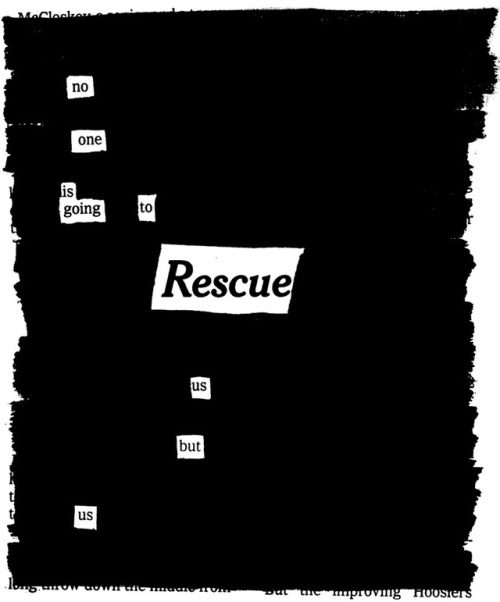
Creating a blackout poem is a unique way for students to express themselves through words and art. Let’s go over the steps to create blackout poems in your art room.
1. Choose a source text.
Provide pages with an exciting mix of words for your students. Repurpose a newspaper article or a novel page, or print a digital text. The more diverse the content, the more intriguing the blackout poem will be. Ask your English Language Arts teacher for age-appropriate suggestions, if needed!
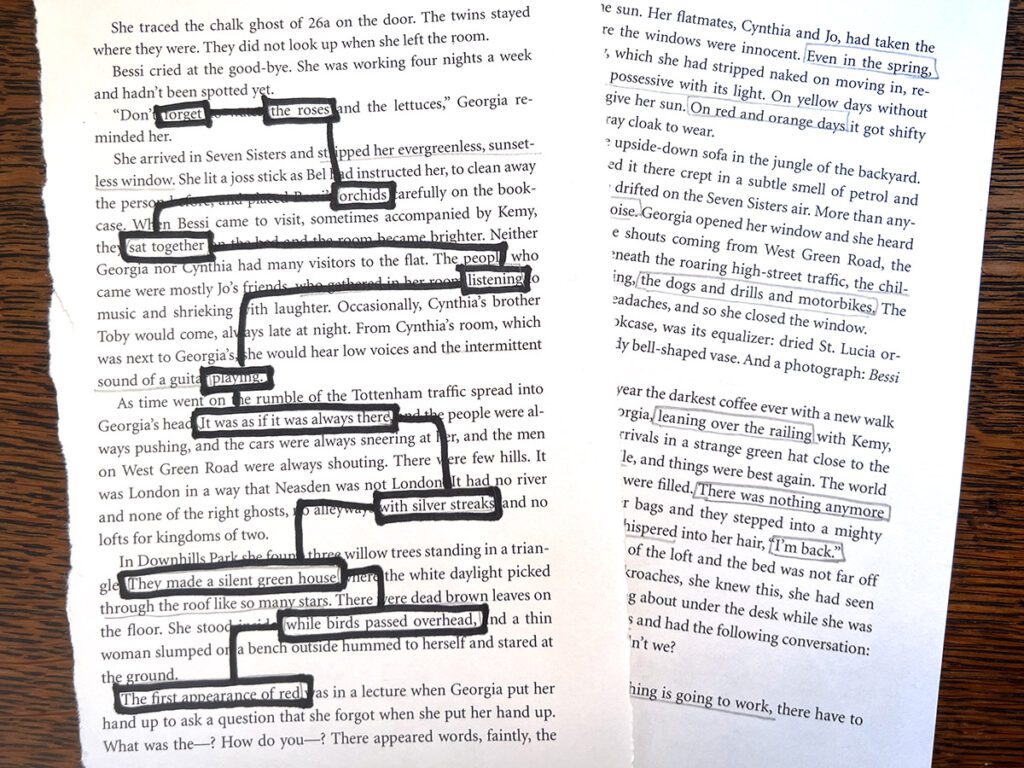
2. Highlight interesting words and phrases.
Use a pencil to lightly highlight or circle words, phrases, or sentences that stand out, resonate, or evoke particular emotions. Literary elements that are meaningful, interesting, or simply catch students’ attention will form the basis of their poems.
3. Plan and box in a poem from the highlighted text.
Decide on an overarching message or theme that captures the highlighted words. Strategically box in words from the highlighted text to form a coherent poem, keeping the message in mind. Consider both the visual arrangement of the words on the page and the flow of the language when selecting a final composition.
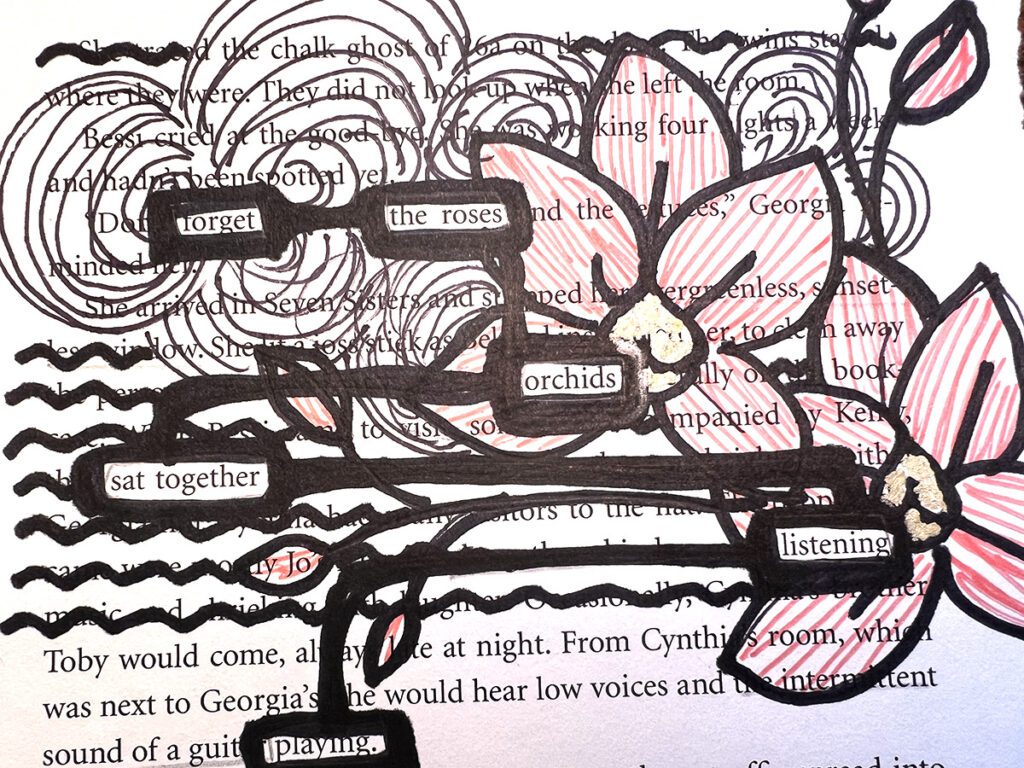
4. Add visual elements to enhance the message.
Add doodles, illustrations, or borders to complement the message and add a more visual component. Allow students to choose from various mediums for their embellishments, including pens, markers, and colored pencils, or hone in on a specific material or technique to align with curriculum goals. The resources below will inspire you in no time!
Choose one of these ways to visually enhance your blackout poems, or try one of your own:
- Apply a watercolor wash for a subtle background.
Brush a watercolor wash over the page or experiment with other simple techniques like the ones in the Elementary Watercolor Basics or Watercolor Painting Basics Packs in PRO Learning. - Use ink to add spontaneity or precision.
Create an expressive and dynamic background with ink splatters or drips to bring spontaneous energy to your blackout poem. Keep things precise with pen and ink instead of markers to box in your poem. Deep dive into the Ink Basics Pack in PRO Learning to learn everything you need to know to use this medium successfully. - Layer paper and other collage elements to create depth.
Integrate collage elements such as newspaper clippings, images, decorative paper, or vellum to build up the layers of your poem. Explore the Creating with Everyday Objects Collection in FLEX Curriculum for ideas on how to use what you have on hand. - Stitch portions of the page to enhance visual interest.
Use embroidery thread to sew words, fill in shapes, and add textural elements to the surface of your poem. Try basic stitches from the Bringing Hand Sewing into the Art Room Pack in PRO Learning. - Print images and patterns to align with the poem’s meaning.
Select imagery that conveys aspects of the central message and incorporate them with different printing techniques. The Experimenting with Monoprinting Collection in FLEX Curriculum has a variety of projects for all levels. - Mix and match mediums to increase variety.
Combine different artistic materials, such as oil pastel, paint, or even fabric, to heighten the visual richness of your blackout poem. For inspiration, sift through the lessons in the Mixed-Media Texture Collection in FLEX Curriculum. - Digitize your poem for more ways to play with manipulation.
Scan or photograph your blackout poem and experiment with digital enhancements. Use photo editing software to add filters and textures or cut, copy, and paste visual elements. Discover the perfect place to start in the Digital Drawing Basics Pack in PRO Learning.
5. Block out any extra text that distracts from the message.
Using a black marker or pen, black out or cover the remaining text on the page, leaving only the words students selected for their poem visible. Encourage experimentation with solid blocks, lines, or creative shapes to obscure the unwanted text.
6. Refine, edit, and title the poems.
Step back and examine the blackout poems and make any necessary adjustments to enhance the literary and visual composition. Title the poems to reflect the message or theme.
7. Share the poems and reflect on the experience.
Plan a self-reflection and critique that is accessible to your students, like ranking work in different categories. Give time to reflect on the process and discuss the literary and artistic choices with other artists.
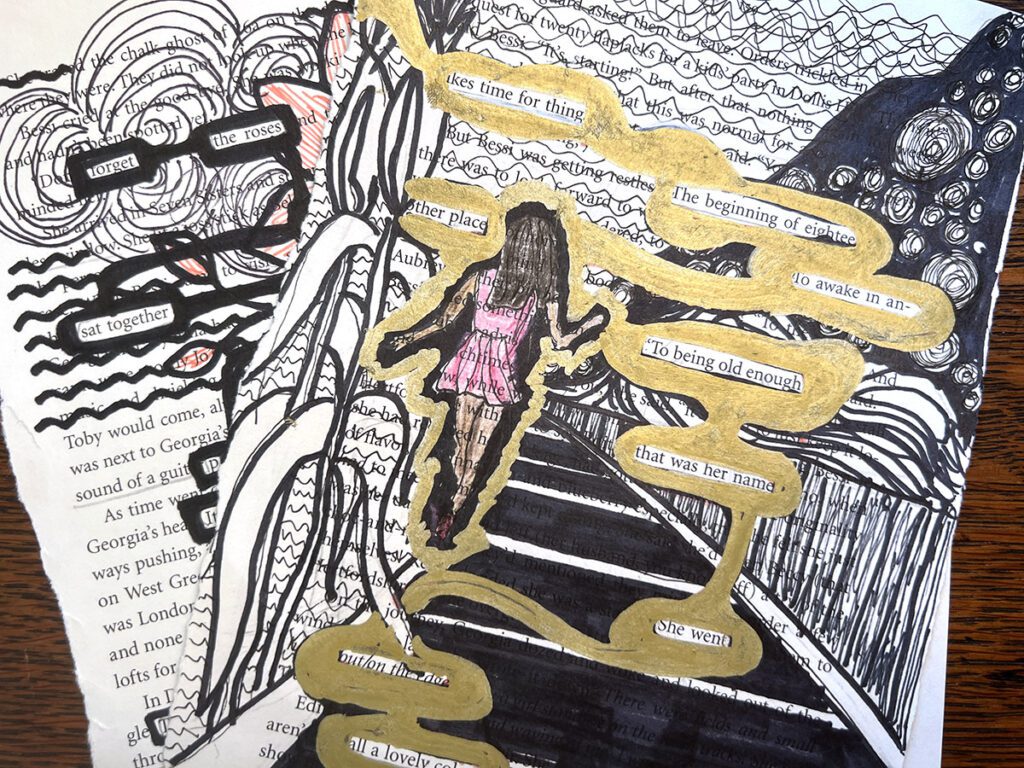
Blackout poetry makes it easy to explore the intersection of language and visual imagery with your students. Draw inspiration from the work of Tom Phillips and Austin Kleon. Then, select a text, box out a poem, and add personalized embellishments to create blackout poems that blur the lines between literature and art. Dig into the resources for ways to customize the activity for your students and curriculum. End with a vibrant discussion where students share their poems and everyone debriefs on the creative process. Blackout poetry will leave your students wanting to make art with every word they read. Get ready to go from text to art in no time!
How do you blend literary and artistic expression in your art room?
Share one way your students enjoy visually embellishing blackout poems.
Magazine articles and podcasts are opinions of professional education contributors and do not necessarily represent the position of the Art of Education University (AOEU) or its academic offerings. Contributors use terms in the way they are most often talked about in the scope of their educational experiences.
